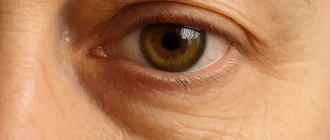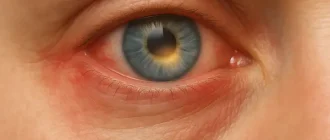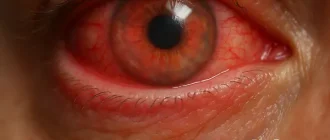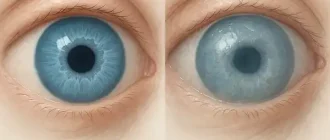A fascinating aspect of human vision is its complexity. It’s a mechanism that seamlessly combines inputs from both eyes, creating a three-dimensional image that helps all of us navigate the world. However, what happens when the two eyes perceive the world at different scales and perspectives? That’s precisely the case with a condition called Anisometropia.
What is Anisometropia?
Anisometropia is a visual condition characterized by a significant difference in the refractive power of the two eyes. This means one eye sees objects clearer than the other, leading to blurred or distorted vision. The discrepancy in the refractive power could be due to a difference in the eye’s length (axial anisometropia), surface curvature (curvatural anisometropia), or lens characteristics (presbyopic anisometropia).

Causes of Anisometropia
The causes of Anisometropia are often linked to genetic factors, with the condition often present at birth. However, Anisometropia can also occur due to certain eye conditions or injuries that lead to a change in the eye’s refractive power: for instance, keratoconus (a condition causing thinning of the cornea), or after undergoing refractive surgery.
Signs and Symptoms
The main symptom of Anisometropia is blurred vision in one eye, while the other retains clarity. In children, this might translate to poor depth perception, complications in visual perception, or strabismus (crossed or misaligned eyes). In some cases, adult anisometropes might experience a condition known as aniseikonia, where the respective image perceived by each eye differs substantially in size.
Diagnosis and Treatment
Anisometropia is diagnosed primarily via a comprehensive eye examination, which involves looking at the refractive power of both eyes. In terms of treatment, the approach largely aims to correct the refractive error. This can be achieved through prescription glasses, contact lenses, or more drastically, refractive surgery. However, it’s crucial to note that the treatment choice largely depends on the severity of the condition and individual patient needs.
Table 1: Key Details about Anisometropia
| Category | Details |
|---|---|
| Definition | A significant difference in refractive power between the two eyes |
| Causes | Genetic factors, eye conditions, injuries |
| Symptoms | Blurred vision, poor depth perception, strabismus, aniseikonia |
| Diagnosis | Comprehensive eye examination |
| Treatment | Glasses, contact lenses, refractive surgery |
Conclusion
Managing Anisometropia is more than merely resolving vision imbalance. It’s about restoring the harmony between both eyes, essential for a complete and clear picture of the world around us. Early detection, periodic check-ups, and the right corrective measures go a long way in managing this condition effectively. It is always advisable to regularly consult with an eye care professional for optimal eye health.





